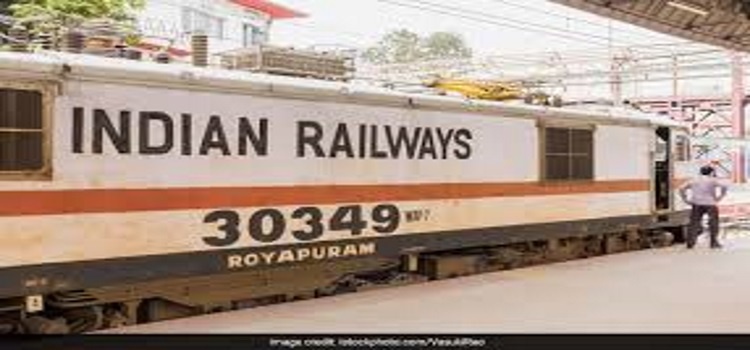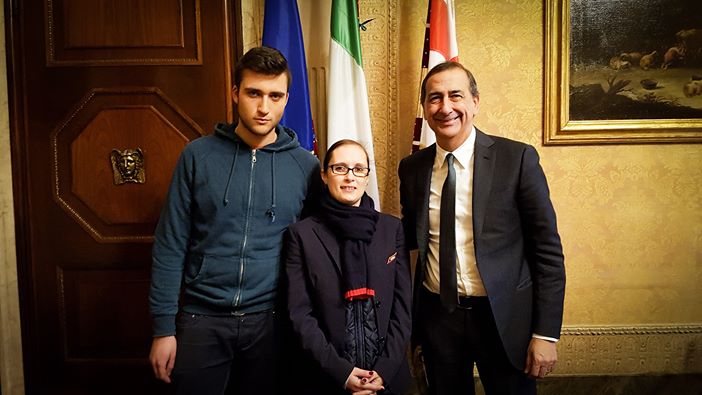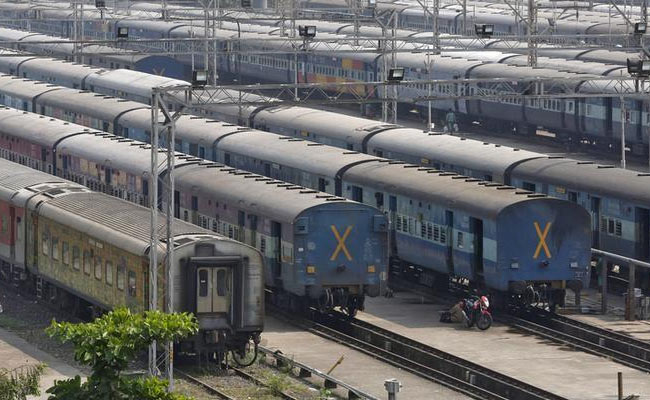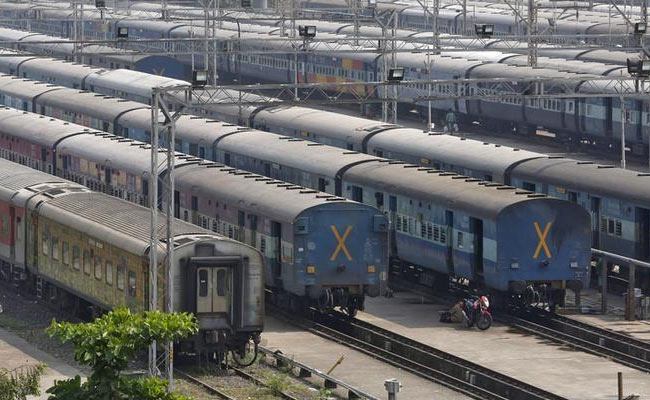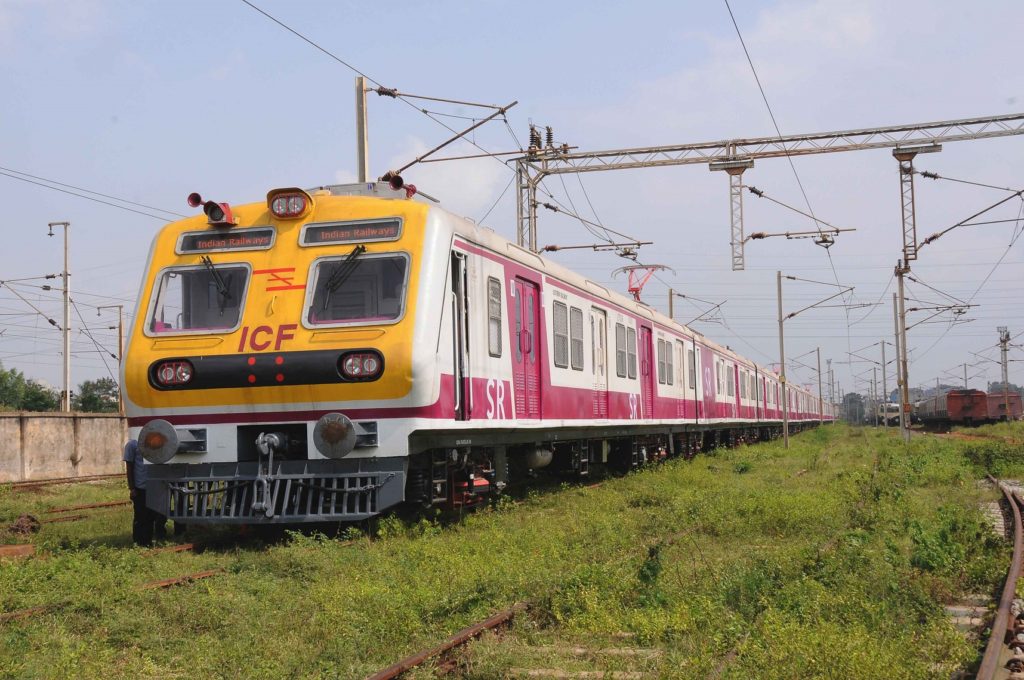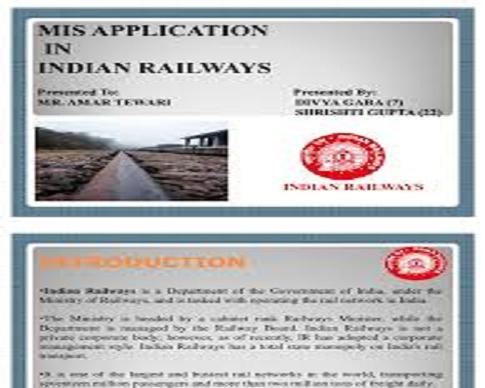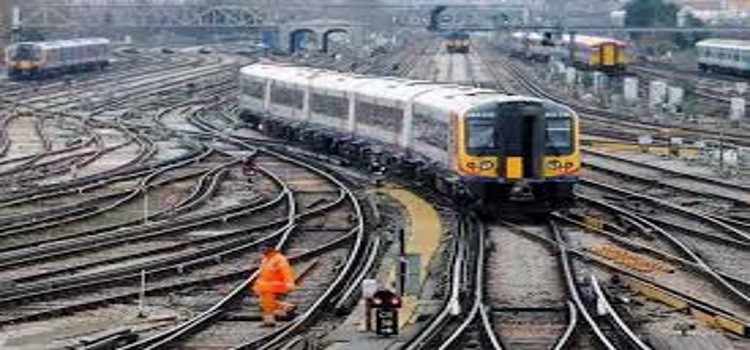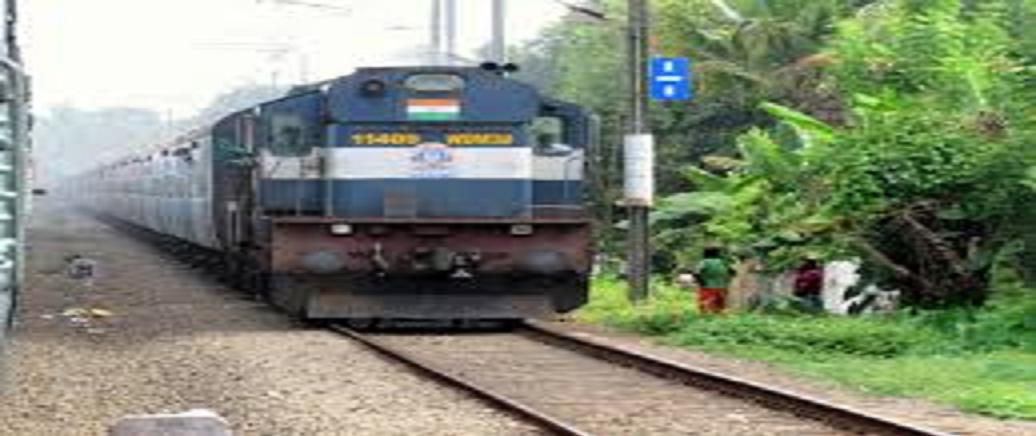
Railway infrastructure growth in southern districts of Tamil Nadu is set to suffer a setback as the Union Budget has poorly allotted funds for the ongoing doubling works in the state. Even 10 per cent of estimated funds have not been allotted for the doubling of Madurai-Thoothukudi, Vanchi Maniyachi-Tirunelveli- Nagercoil and Kanniyakumari-Thiruvananthpauram lines.
According to the railway pink book submitted before Parliament on Tuesday, for 160-km-long Madurai-Vanchimaniyachi-Thoothukudi line, the railways has sanctioned Rs 75 crore, while the project cost is estimated at 1182.23 crore.
Similarly, another doubling project of the 102-km Vanchi Maniyachi-Tirunelveli-Nagercoil section which was estimated to cost Rs 1003.94 crore has been sanctioned just Rs 75 crore.
The Kanniyakumari-Nagercoil-Thiruvananthapuram line estimated to cost Rs 1431.90 crore has received Rs 110 crore, out of which Rs 100 crores was proposed to be sourced from extra budgetary resources.
While Tamil Nadu witnesses highest inter-state migration for education, health and employment, transportation demand has been increasing every year.
People of the southern districts hoped that speedy completion of the doubling project would connect the region with other parts of Tamil Nadu and the country. It would also accelerate the social and economic development of Madurai, Virudhunagar, Thoothukudi, Tirunelveli and Kanniyakumari districts.
P Edward Jeni, general secretary, Kanniyakumari District Railway Users Association, said that even if Rs 250 crore to Rs 300 crore was allotted for each project a year, it would take another three to four years to get completed. “With hardly Rs 75 crore a year, it’s nearly impossible to finish the project in 10 years,” he said.
According to the budget allocation, the state has received Rs 2,548 crore this year as against Rs 2,287 crore allotted last year.
Though the state has received Rs 261 crore more compared to the previous year, the funds remain insufficient to complete the rail projects in the state.
Gauge conversion
The Union Budget has also allotted Rs 80 crore for one of the much delayed Madurai-Bodinayakkanur gauge conversion works. The section track was dismantled in 2010 and Theni district has since lost its train connectivity.
Central districts
Central districts of Tamil Nadu have received Rs 239.46 crore for ongoing gauge conversions and new lines. While 64.46 crore has been allotted under capital expenditure by the railways, Rs 175 crore is to be sourced through extra budgetary resources.
The gauge conversion work between Tiruvarur and Pattukottai has just been finished, as part of the 149-km gauge conversion of Tiruvarur-Thiruthuraipoondi-Pattukottai-Aranthangi-Karaikudi section. Similarly, the gauge conversion works are being carried out in full swing in Thirutturaipoondi-Agasthiampalli section. In addition to this, funds are to be used for laying a new track between Mannarkudi-Pattukottai (34 km) and Thanjavur-Pattukottai (47 km). Laying of these new tracks has been pending for nearly 20 years.
New lines
Projects delayed for more than 10 years have also not received funding. The 91.5-km-long Erode-Dharapuram-Palani line was allotted Rs 10 lakh this year too. It was approved in 2005.
The other two projects in northern districts – Tindivanam-Gingee-Tiruvannamalai and Tindivanam-Nagari (179.2 km) – have been allotted Rs 10 crore each. These projects were also inaugurated in 2007-2008. For laying a new line in the Chennai-Cuddalore section via Mahabalipuram (179.28 km), the railways has allotted Rs 100.10 crore. The Madurai-Tuticorin via Aruppukkottai (143.5 km) project has been allotted Rs 20 lakh, while the 36-km long Morappur-Dhamapuri line has received Rs 36 crore.
Chennai
For laying 60-km line connecting Sriperumbudur with Avadi via Guduvanchery and Irunkattukottai, estimated to cost Rs 839 crore, has got Rs 20 lakh.
Slow track
There has been scant progress in railway gauge conversion, which began in 2004, between Virudhunagar, Tamil Nadu, and Kollam, Kerala. Work between Virudhunagar and Rajapalayam, in Tamil Nadu, ended in 2007 and was extended to Shencottah in Tamil Nadu a year later. Conversion between Kollam and Shencottah was finished in part in the Kollam-Punalur stretch, in Kerala, in 2010. However, in mid-2010, train services between Shencottah and Punalur were suspended. After the issue was raised repeatedly, work was completed on the Shencottah-Edamon-Punalur section.
After the Chief Commissioner of Railway Safety, Southern Railway, inspected the broad gauge line between Shencottah and Edamon in January this year, the green signal was given for commencing services between Edamon and Shencottah. However, given the slow pace of work so far, one wonders whether people in the region will have to wait for long for a service between Punalur and Shencottah, despite it being a long-standing demand.
Train operated in Coimbatore-Podanur-Pollachi section had poor patronage because of timings. After gauge conversion, section remains underutilised
Now, this one is a clear case of precious funds going down the drain. The railway line between Podanur and Pollachi was converted from metre gauge to broad gauge by spending several crores. The project was implemented after a long wait as it ran into funds constraints, land acquisition litigations and a rocky terrain that made work execution difficult.
Now, after completion, it remains underutilised. The only passenger train that was introduced on this section is described as tokenism by the people as it lacks patronage because of the odd timings and was withdrawn from Jan. 14.
Train No. 06081/06082 operated in Coimbatore-Podanur-Pollachi section from July 15, 2017. It has had very poor patronage from the start because of the timings. The idle rakes of Train No. 56604/56605 (Shoranur-Coimbatore Fast Passenger) shared for the passenger train to Pollachi has now been withdrawn from Jan. 14 due to the introduction of a special train between Palani and Coimbatore via Pollachi, Kinathikkadavu and Podanur from on that day. The train chugs out of Coimbatore at 1.35 p.m. In the return direction, it leaves Pollachi at 3.05 p.m. and reaches Coimbatore at 4.15 p.m., with an average patronage of only 50 to 60 passengers across 11 coaches every day. As a consequence, the revenue is a measly Rs. 750 to Rs. 900 a trip, as against the operational cost of around Rs. 1.5 lakh.
Many regular commuters suggested that the patronage will increase if the train is operated during peak hours.
After the persistent demand from the people from different corners, the Salem Railway Division had introduced the Special Train No. 06709/06710 Coimbatore-Palani-Coimbatore from Jan. 14 for three months. Coaches of this train would run as Train No. 56709/56710 Palani-Madurai-Palani.
Even though the Salem Division had submitted a proposal to extend the services of Semmozhi Express up to Pollachi, it might not serve any purpose. Rail users say this is because the train would depart Pollachi late in the night and leave Coimbatore for Pollachi very early in the morning.
It was also suggested that the Fast Passenger (Train No. 56848) in Palghat town-Tiruchirappalli could be operated via Pollachi instead of Madukkarai (as a train is already being operated via Madukkarai) in the morning to the serve commuters from Pollachi. Similarly, another section that needs more services is the Coimbatore – Mettuppalayam route. Though many train services are operated to Mettupalayamm from Coimbatore, tourists look for late night trains and also on Sundays to reach Udhagamandalam, and the Vanabadrakaliamman temple and a water theme park on the way.
Over 54 percent railway tracks in Tamil Nadu yet to be electrified
With the Railway Ministry having decided not to announce any new train in its budget, rail passengers in the state are pinning their hopes on an increased fund allocation for speedy completion of ongoing and long-pending rail projects.
Despite being sixth most populous state in the country and one of the highly passenger revenue-generating states in the Indian Railways, rail infrastructure in Tamil Nadu lags behind on several counts. Particularly, in terms of electrification of tracks, the state has been ignored for several decades, running with only 46 per cent of electrified tracks on its total track length.
According to a report submitted by the Railway Ministry in Parliament, as on April 1, 2017, a total of 4,027-km-long track runs through the state, out of which 1,851-km track has been electrified. The electrification percentages in Andhra Pradesh and West Bengal, which are relatively larger than in Tamil Nadu with respect to population stood at 77.77 and 64.84 respectively, while smaller states like Kerala, Jharkhand and Chattisgarh have got over 75 per cent of tracks electrified.

“After fighting for three decades, we got the Madurai – Kanniyakumari line doubling works,” said Kanniyakumari Rail Users Association general secretary P Edward Jeni. He said passengers would get the benefit of track improvements only if station infrastructure was developed to handle more trains.
Even though several sections were thrown open for traffic after gauge conversion and new tracks were introduced including Mandamadurai-Virudhunagar, Karur-Namakkal- Dindigul, Pollachi-Palakkad-Podanur and Vellore-Tiruvannamalai-Villupuram, the Railways could not operate more trains. It has been more than six months since the entire stretch of Chenai Egmore-Tiruchy was completely electrified with double lines, the Railway could not ply any additional train in the section.
“More funds should be allotted for improving terminals with additional stabling lines and pit lines at Tambaram, Madurai, Tiruchy, Virudhuangar, Tirunelveli, Rameswaram, Nagercoil, Salem and Tondiarpet,” said Naina Masilamani, member of Divisional Rail Users Consultative Committee. With the Railways replacing the old ICF coaches with LHB rakes, the Southern Railway should be allotted more coaches.
The ongoing works include doubling of tracks from Chennai to Kannaiyakumari, gauge conversion of Tiruvarur-Pattukottai-Aranthangi-Karaikudi section, electrification of Villupuram – Cuddalore Port – Mayiladuthurai – Thanjavur and Mayiladuthurai – Tiruvarur sections. In addition to this, Madurai-Bodi gauge conversion and new line-laying works between Tindivanm and Nagari via Walajah road have been delayed.
The Union budget is also expected to take a final call on the East Coast Railway line proposed to connect Kanniyakumari with Karaikudi via Tiruchendur. When contacted, official sources hoped that funds would be allotted for electrification and doubling works in Tamil Nadu. “We also expect fund allocation for modernising the ICF to manufacture the LHB coaches and replacing the Scherzer span of Pamban bridge,” said an official.
Infra boost needed
- Though several sections were thrown open for traffic after gauge conversion and new tracks were introduced, Railways could not operate more trains
- Even six months after the entire stretch of Chenai Egmore-Tiruchy was completely electrified with double lines, the Railway could not ply any additional train
- Madurai-Bodi gauge conversion, new line-laying works between Tindivanam and Nagari via Walajah road delayed
- Union budget is expected to take a final call on the East Coast Railway line
